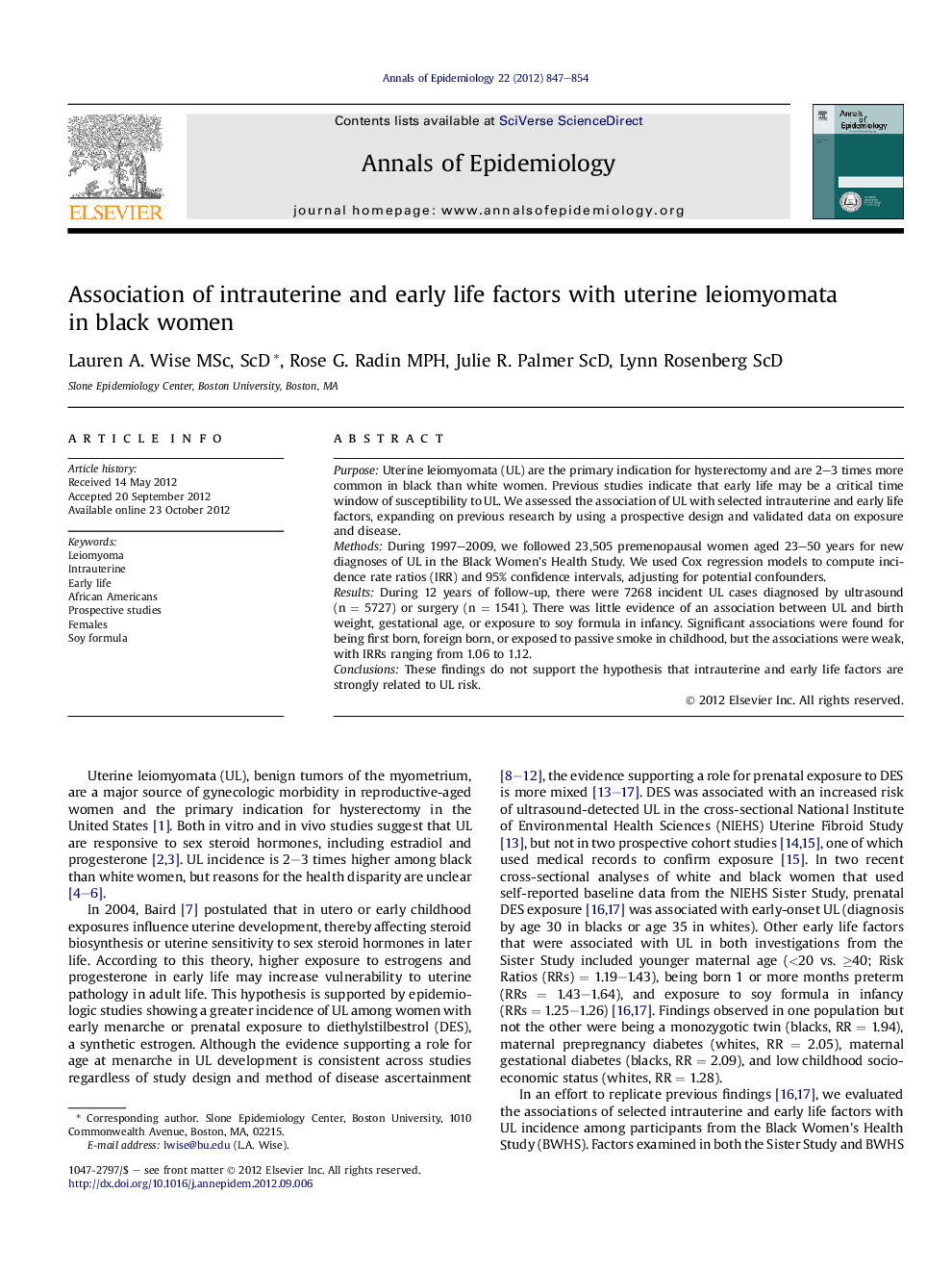| Article ID | Journal | Published Year | Pages | File Type |
|---|---|---|---|---|
| 3444673 | Annals of Epidemiology | 2012 | 8 Pages |
PurposeUterine leiomyomata (UL) are the primary indication for hysterectomy and are 2–3 times more common in black than white women. Previous studies indicate that early life may be a critical time window of susceptibility to UL. We assessed the association of UL with selected intrauterine and early life factors, expanding on previous research by using a prospective design and validated data on exposure and disease.MethodsDuring 1997–2009, we followed 23,505 premenopausal women aged 23–50 years for new diagnoses of UL in the Black Women's Health Study. We used Cox regression models to compute incidence rate ratios (IRR) and 95% confidence intervals, adjusting for potential confounders.ResultsDuring 12 years of follow-up, there were 7268 incident UL cases diagnosed by ultrasound (n = 5727) or surgery (n = 1541). There was little evidence of an association between UL and birth weight, gestational age, or exposure to soy formula in infancy. Significant associations were found for being first born, foreign born, or exposed to passive smoke in childhood, but the associations were weak, with IRRs ranging from 1.06 to 1.12.ConclusionsThese findings do not support the hypothesis that intrauterine and early life factors are strongly related to UL risk.
